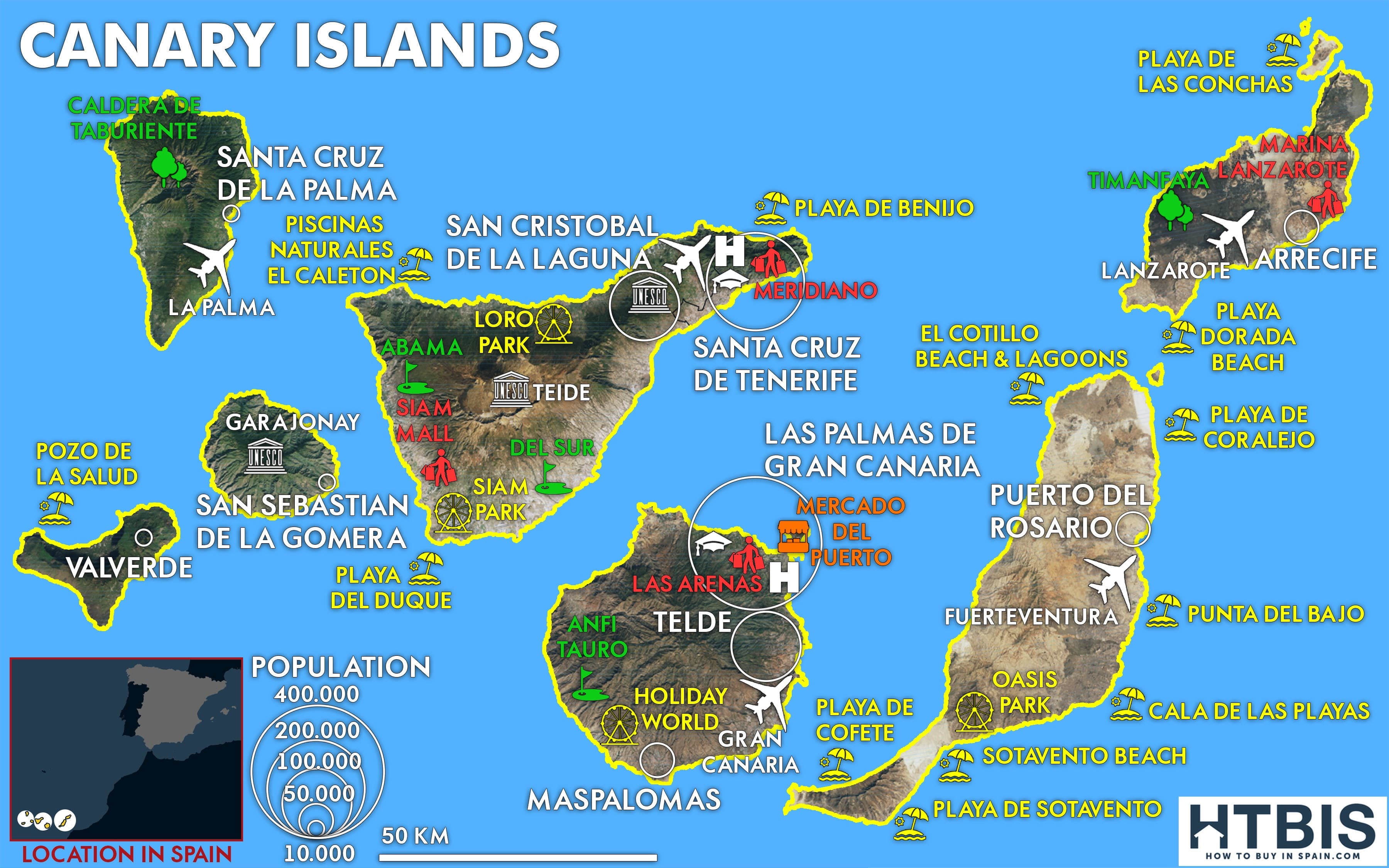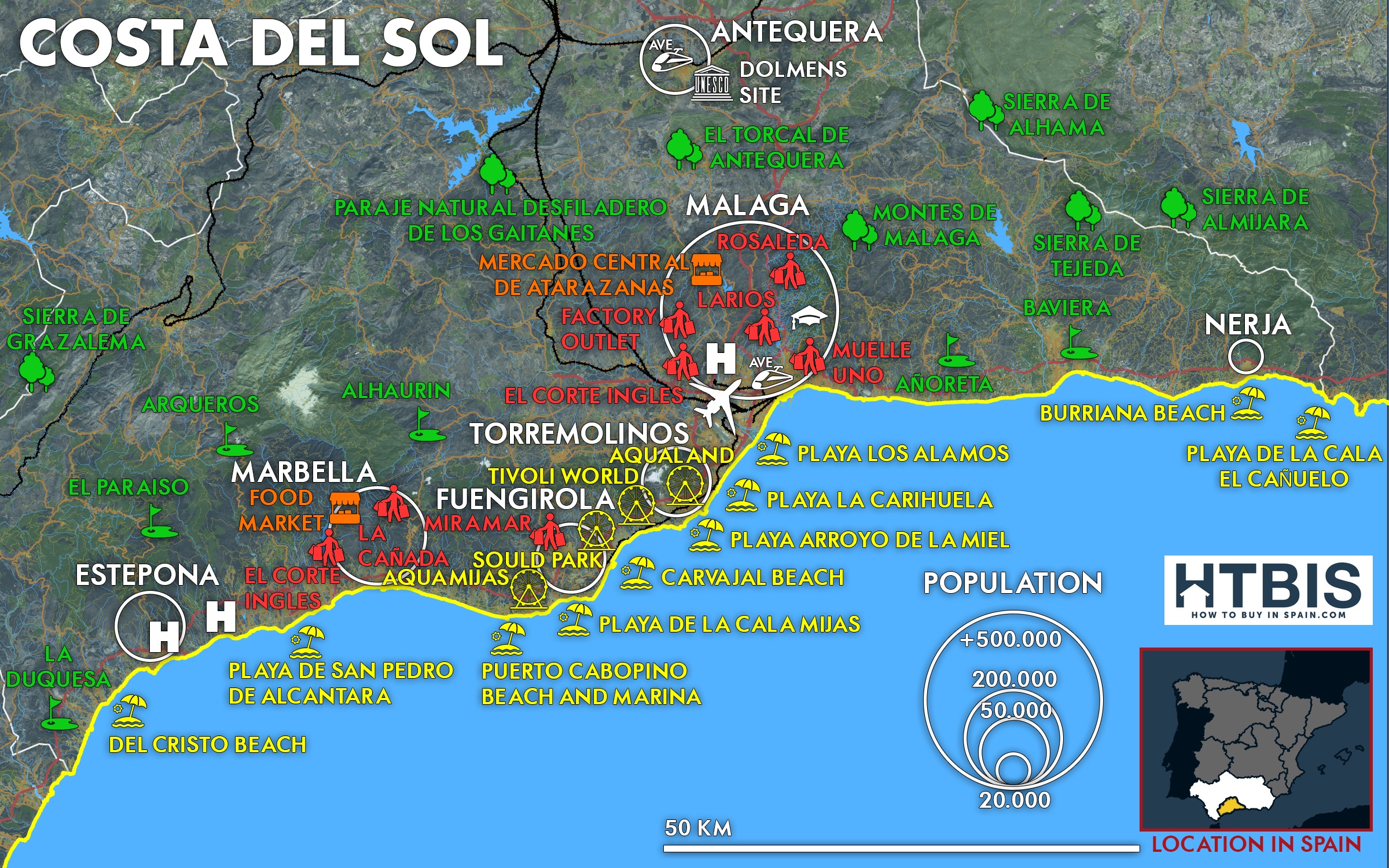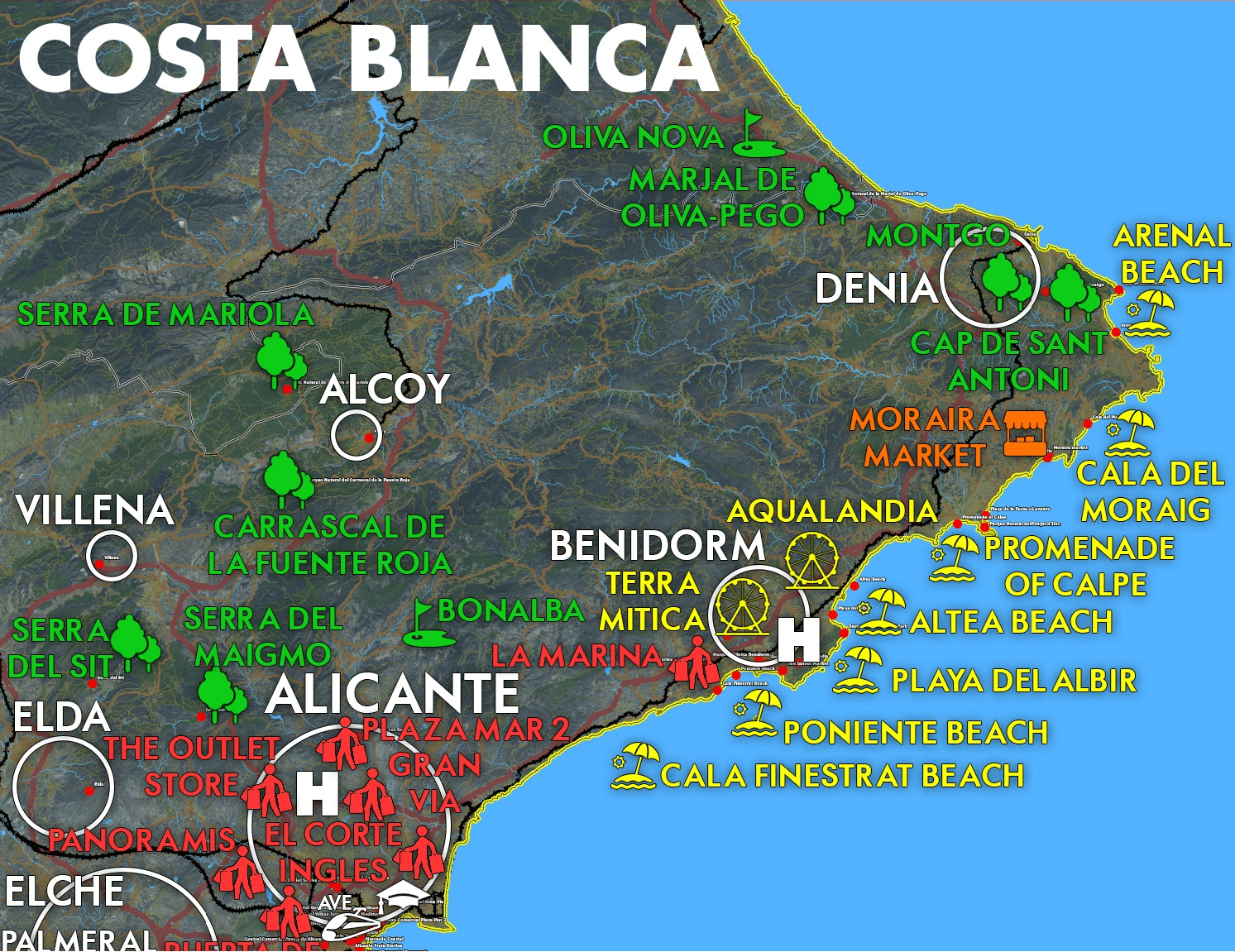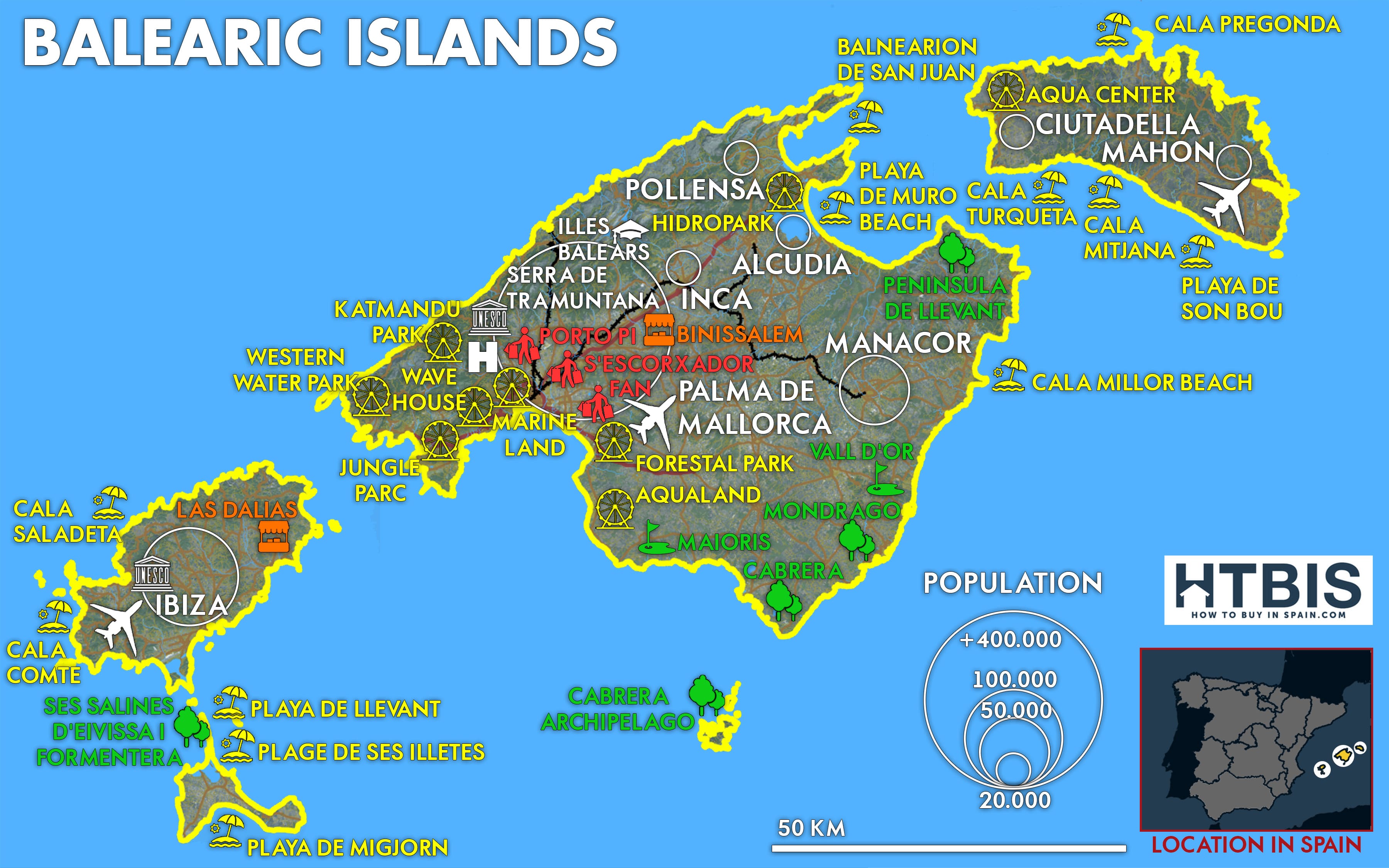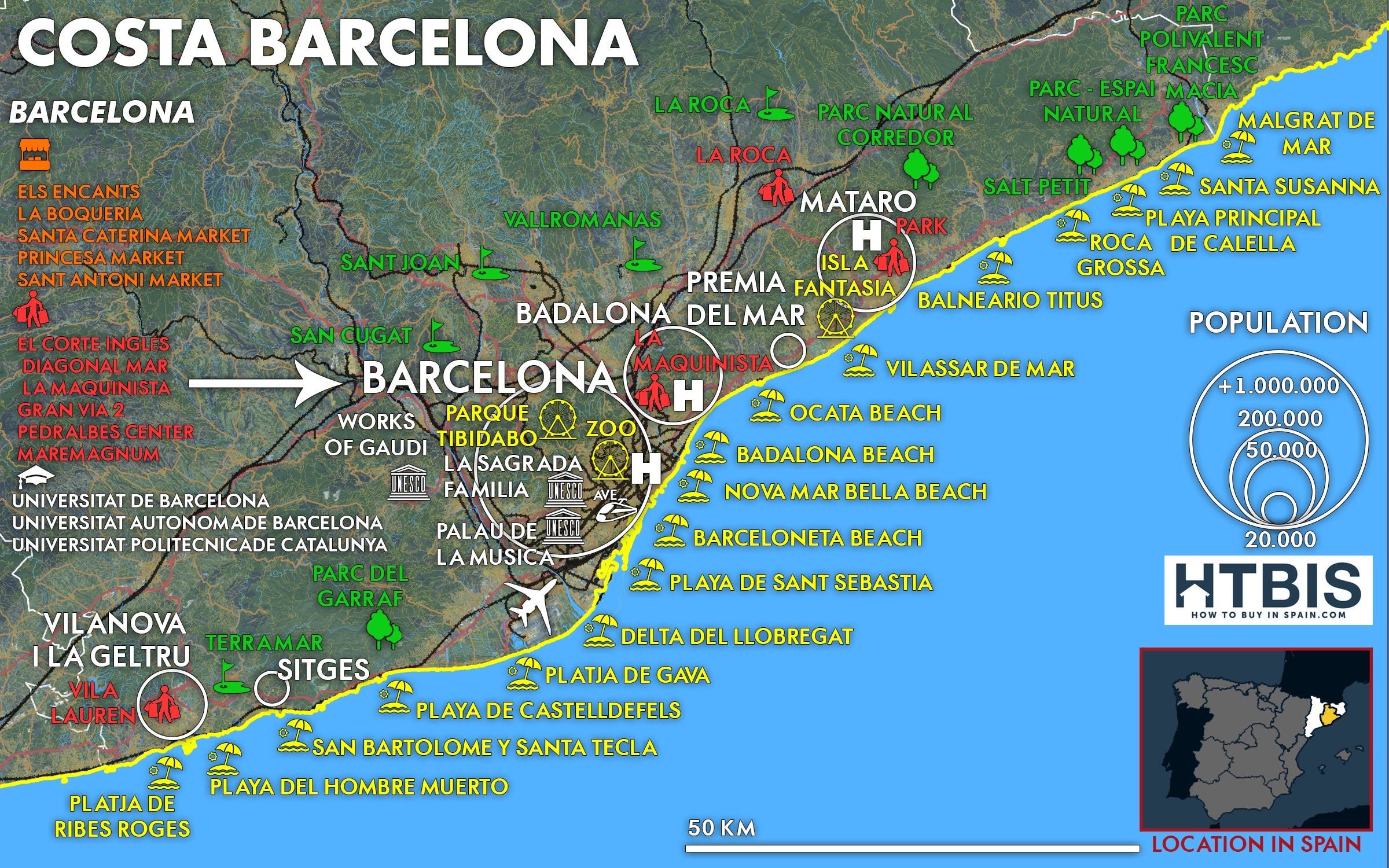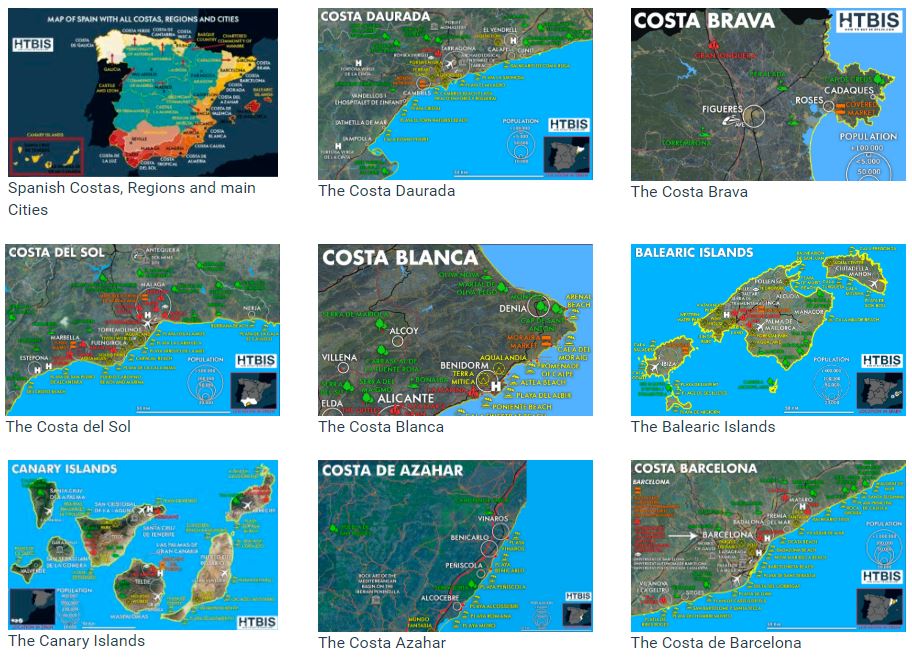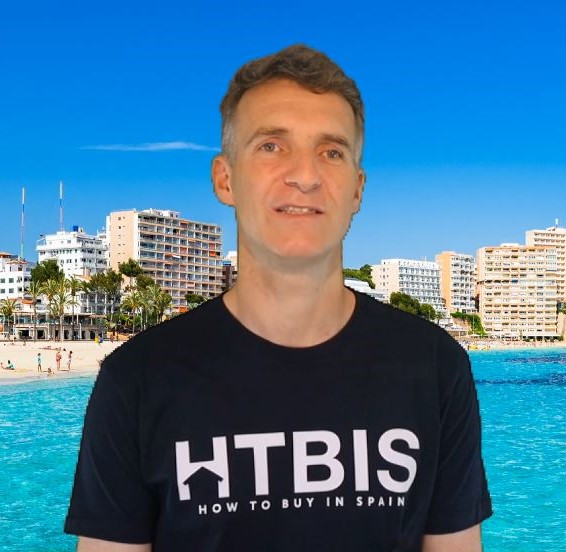 Reading time 7 minutes. Use our table of content for a quick read.
Reading time 7 minutes. Use our table of content for a quick read.
Last Updated on 17/04/2023 by STEPHANE
Click on any flag to get an automatic translation from Google Translate. Some news could have an original translation here: News Nouvelles Nieuws Noticias Nachrichten
The Top Spanish regions for setting up your B&B
Let us summarize the conclusions reached previously. Please find the earlier articles on setting up your B&B in Spain at the bottom of this article.
Maria and John have plans to move to Spain and start operating a guesthouse. The basic conditions are met: their objective is not primarily financial, because they have funds available (€ 365,000) and they love human contact. Remember our first article: Is the life of a B&B Manager for you?
Both Maria and John have different criteria, although compatible: Having a pool, large rooms and a nearby beach is fundamental to Maria. For John what primarily matters are: the reduced maintenance of the property, an available garage and a golf course nearby. If you need a full refresher, here was the article: How to select the perfect bed and Breakfast in Spain?
Once the property is acquired and they start running the business, they also know that they should not skimp on hygiene and safety conditions (swimming pool/fire). It will be relevant to go beyond legal obligations as we explained in our article The Spanish B&B market
We continue in this 4th theme an important phase: the B&B localization.
The top Spanish regions to set up your B&B in Spain are :
- The Canary Islands,
- Andalusia,
- The Valencian Community,
- The Balearic Islands and
- Catalonia.
Those five regions have been pre-selected on the basis of data from official tourist supply and demand.
Let’s fly to those regions but here are some good advice.
Our advice: Fall in love with your place!
Expatriation as part of a B&B project has to be viewed from a global perspective.
The goal is to live there all year long. Maria and John, therefore, investigated the region in depth. This means not only from a touristic point of view (because it will be a working place for them)…or just a professional one (because they will also have free time..hopefully!). They travel to these areas, during the low tourist season as well, to be sure that there is a good chance that they will enjoy themselves. Discussing with the local population also enabled them to “feel” the area.
Identify the potential disadvantages
The idea is to try to identify all potential disadvantages because a dream usually hides them. The heart must express itself while leaving room for more pragmatic aspects.
You, as B&B managers & as human beings, will be part of the service provided. Therefore, you have to deeply love the place where you live in order to share your experiences with your guests. More than anything else, this is what will make their stay unforgettable! Your past guests will be your best ambassadors for attracting future ones. Don’t forget it!
Measure the attractiveness of your selected region
That being said, let us focus, in this 4th theme, on the aspects of tourist attraction of the different regions preselected. Maria and John have to think not only for themselves but also for their future guests by answering the following question. What makes their customers prefer their house & region over another one?
Canary Islands
8 islands, very different from each other, make part of this archipelago benefiting from a subtropical climate. Of volcanic origin, they are geographically on the African plate. The Canary Islands is the Spanish region that hosts (after Catalonia) the most foreign tourists.
Maria and John were impressed by the island of Hierro, which is a biosphere reserve, self-sufficient in terms of electrical needs. They also loved the impressive vegetation of La Palma as well as the island of La Gomera, Christopher Columbus’ last European stopover in 1492, the eternal spring of Tenerife, the micro-continent of Gran Canaria with its northern vegetation and its southern deserts, as well as the 3 eastern islands, including the black sand of Lanzarote, not to mention the small island, recently promoted as the region’s 8th island, Graciosa. Tourism mainly focuses on Tenerife, Gran Canaria and to a lesser extent Lanzarote and Fuerteventura.
The conditions of purchase of a property are quite attractive. The general rule in Spain is a 10% registration rate. In the Canary Islands, buyers will only have to pay a reduced rate of 6.5% (purchase value <400,000 €, 7% for new properties). For Maria and John, based on their budget of 365,000 €, this represents a potential saving between 10,950 € and 12,775 €. Quite a substantial amount.
The climate varies a little throughout the year as you can check on our weather infographics with monthly averages for the top 20 Spanish cities. The high season is even considered as December / January. By deciding to settle there, Maria and John could therefore attract guests throughout the year. The occupancy rate of their homes would increase … and thus their financial figures.
Having listed these attractive points, let’s not lose sight of a Canary Islands reality: the distance to northern European countries. Count between, is +/- 3,500 kilometres according to the place of departure, meaning 4-5 hours flying.
Only Gran Canaria and Tenerife are also accessible by direct flights. Going to any other 5 islands will require an internal flight, or even take the boat. With waiting times, and stops, plan a 1-day journey to reach them.
Andalusia
The most southerly region of mainland Spain, which is also the most populous, includes eight provinces, from Cádiz in the west, called the “Costa de la Luz” to Almería in the east, going as far as Córdoba in the north.
It has a large number of golf courses along the coast. We sometimes talk about the “Costa del Golf” rather than the “Costa del Sol“!
Sometimes criticized because the region has suffered from real estate developers’ appetites, the region still has delightful hidden places in small villages, not far from the coast. It sometimes only takes a few miles inland drive to discover them.
The Costa del Sol is the most famous region in Andalusia but you have three other Costas in Andalusia: The Costa Tropical, The Costa de la Luz and The Costa de Almería.
A tax aspect is also worth pointing out: in terms of inheritance, the property of an Andalusian resident will be tax-exempt up to € 1 million.
As far as coastal villages are concerned, Maria and John have identified several spots. Their “best of” consists of Manilva, Mijas, Nerja, El Varadero and the unmissable Cabo de Gata. They also found beautiful B&B’s already operating on Archidona (1 hour north of Málaga), in the vicinity of Órgiva (near Motril), Conchar (Granada) or Barbate (Cádiz).
Seeing beautiful guesthouses in activity inspires them. Maybe it would be relevant to buy a running B&B, already having its activity license? It could save time and money. We will come back to it later.
The Costa del Sol is the most famous region in Andalusia but you have three other Costas in Andalusia: The Costa Tropical, The Costa de la Luz and The Costa de Almería click on the links to find out everything on them: Airports, AVE stations, the biggest cities, the nice shopping places, what should you visit, the Unesco Sites, the golf courses, the top beaches,…
The Valencian autonomous region
Three provinces are part of it: Castellón, Valencia and Alicante. From the north, the Costa del Azahar (orange trees) opens the way to the Northern part of the Costa Blanca. Going beyond Alicante, we go along the Southern part. Overall, the weather conditions are quite attractive all year long, even in winter, with sometimes milder temperatures than in Andalusia (follow the link to compare any Spanish City weather statistics). Many British people have elected this region as their residency place.
Here is another paradise for golfers; there are a large number of golf courses along the coast.
Last but not least, several airports serve the Costa Blanca all year round: Castellón, Valencia and also Alicante.
Maria and John enjoyed towns and villages such as Denia, Jávea, Peñiscola and Altea. South of Alicante and not far from the airport, they also noted Gran Alacant which presents new built-up housing with magnificent views of the Mediterranean, located 10 km below.
The B&B touristic offer naturally exists, but the hotel offer primarily dominates, with urban areas such as Benidorm, Gandía or Calpe.
The Costa Blanca is the most famous region in the Valencian Community but you have three other Costas: The Costa Calida, The Costa de Valencia and The Costa del Azahar click on the links to find out everything on them: Airports, AVE stations, the biggest cities, the nice shopping places, what should you visit, the Unesco Sites, the golf courses, the top beaches,…
The Balearic islands
Like the Canary Islands, the Balearic Islands are an archipelago of islands. The three main ones are Mallorca, Menorca and Ibiza.
Mallorca is the largest and most populated one. Tourists mainly come from the UK or from Germany just like Menorca.
Ibiza sometimes presents the image of mass tourism. Although this is not always justified, it is likely that Maria & John’s potential clients are also aware of this reputation and may even share this point of view.
In the Balearic islands, we will talk about “rural hotel”, “agroturismo” or “turismo de interior”.
In terms of climate, average temperatures are around 20 degrees between May and October. This period more or less corresponds with the tourist season, which is spread over 6 to 7 months per year.
The journey to get there almost inevitably involves the plane. The distance to the Canaries is nevertheless halved. On the other hand, going to Menorca or Formentera means internal movements (plane / boat) which lengthen the journey time.
Here, too, María and John will have to be taken into account the legislation on rural tourism in general and guest houses in particular. Rural areas are protected; you can not do whatever you would like to, not any more.
Catalonia
Catalonia is Spain’s main road gateway. One of the important advantages of the region is therefore its location. This can be important for Maria & John because people who choose a “bed and breakfast” mode for their holidays usually ride their cars. This is especially the case if they travel with their family. Coming from the north of Europe, they will discover Catalonia first.
The Costa Brava will path the way to the Costa de Barcelona and then to the Costa Dorada (Tarragona region).
“Between sea and mountains”; Catalonia has everything: better geographical proximity, gastronomic and cultural high-quality offer, and one of the coolest climates in Spain. The coastal areas’ often hilly landscapes have protected Catalonia from extensive urban touristic projects.
In addition, the city of Barcelona attracts tourists all year round. The cooler climate of the region, compared to other Spanish regions, does not therefore represent a disadvantage as such. The heat and the sun are not necessarily the first reasons for going to Catalonia.
Maria and John hit Catalan roads, looking for beautiful “casas de payés”. The favourites of our heroes are Empuriabrava, Calella de Palafrugell, Pals, Begur, Tossa de Mar and Garraf.
In terms of politics; the region is regularly in the spotlight. Catalonia presents a history and a culture of its own, which makes it “different” … just like the Basque Country or Galicia elsewhere. If María & John choose to settle there, they need to know it…and be ready to learn the Catalan language. This will secure a better integration in the local everyday life.
The Costa Barcelona is the most centric Costa in Catalonia but you have The Costa Brava in the north of Barcelona and The Costa Daurada in the South click on the links to find out everything on them: Airports, AVE stations, the biggest cities, the nice shopping places, what should you visit, the Unesco Sites, the golf courses, the top beaches,…
Our general advice
Gather information by reading a maximum of information blogs or websites on “casas rurales”. For example, the Spanish association of rural tourism ASETUR, created in 1997 offers a lot of information, particularly on the legal requirements. This is useful when it comes to check certain details when they have selected the property and to confirm the conformity of the property with the Spanish and regional laws.
This ASBL also proposes a classification of guest houses via “ears”, ranging from a scale of 1 to 5. It mentions the criteria to belong to different categories:
Do you want to discover any region in Spain? Start with this page with all the different maps of the Spanish Costas in Spain with their must-do activities.
To conclude
Focusing on the geographical criteria of Maria & John, we realize that they each have one in common: the property must be close to the beach for her, and close to a golf course for him. Willing to benefit from the longest possible tourist season, they eliminate Catalonia, too cool in winter. They also say that access must be easy, so they finally reject both island archipelagos (Canary and Balearic). There are two possibilities remaining: the Valencian community and the Costa del Sol.
Having ridden in these two areas, they finally decided to focus on the Costa del Azahar and the north of the Costa Blanca. This coastal region linking Valencia to Alicante seems to them quite adapted to their project. A mild climate all year long, beautiful beaches and a profusion of golf courses in the immediate vicinity represent solid arguments.
We now have this essential data: the “where”. In the next episode, María and John will introduce us to the Costa del Azahar and Costa Blanca, through some real estate visits. They will share their feelings, explain the way they managed the purchase negotiation … and present their final choice. See you soon.
We want to contribute to the success of your B&B in Spain
We invite you to discover this world thanks to our external partner, Patrick. We want to contribute to the success of your project by sharing tips and informative data.
Patrick has created a detailed series of articles related to his extensive experience in the B&B business in Spain. It is a chronological guide starting with the set up of your B&B project and advising you step by step in order to better manage this professional transition: How to create selection criteria? Where to locate? Administrative work? Marketing?…
The topics are divided into a series of 8 themes and will be published on a regular basis. At the end, you will have all the keys to open the door of your dreams.
We wish you a pleasant reading.
Need assistance for your B&B? Ask for more information to Patrick. Our B&B Specialist in Spain
Introduction: How to set up a Bed & Breakfast…and manage it?
Theme 1: Is the life of a B&B Manager for you?
Theme 2: How to select the perfect bed and breakfast in Spain?
Theme 3: The Spanish B&B market
Theme 4: The Top Spanish regions for setting up your B&B
Theme 5: The financial plan for your B&B in Spain
Patrick

B&B adviser, Partner of HowtobuyinSpain
Patrick created and managed his own B&B in Spain for 8 years. He knows the ins and the outs of that business.
About Patrick and his team, our B&B adviser
Patrick has a degree in Applied Economics and a master’s in International Politics. With a financial background, he lived for 8 years in Spain, setting up from scratch and managing a charming B&B. The B&B is still running today.
Patrick advises you on all the major decisions related to the business life of a B&B: B&B Business setting up, B&B estate selection criteria, administrative & legal procedures, Communication strategy and Day to day business.
His expertise covers all the Spanish coastal regions.
Languages: Dutch, French, English, Spanish & Catalan
Looking for a property hunter, a lawyer, an architect,… a local expert in Spain? Ask us directly!


